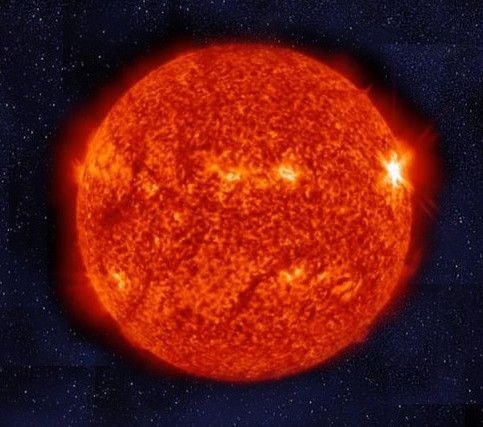Attitude Control
Dawn's attitude control system was responsible for determining its orientation in space—also know as "attitude"—and providing control for maintaining and changing that orientation. Its hardware consisted of two star trackers, three two-axis inertial reference units, 16 sun sensors and four reaction-wheel assemblies.
The system controlled gimbals to keep the solar arrays pointed towards the Sun. In addition, it controlled gimbaling of the ion thrusters, which could be moved on two axes. The system usually determined the spacecraft's attitude using star trackers to sight known stars.
Dawn's attitude was usually controlled by the reaction wheels, devices somewhat similar to traditional gyroscopes that use the momentum of spinning mass to maintain or change the spacecraft's orientation.
However, the attitude can also be maintained or modified by a set of twelve 0.9-newton hydrazine thrusters that are collectively called the reaction control system. When Dawn's reaction wheels wore out, engineers developed plans that enabled the mission to meet extended objectives at Ceres without reaction wheels.
Telecommunication
Dawn communicated with Earth through code sent to the spacecraft's computer through NASA/'s Deep Space Network. The telecommunication subsystem provided communication with Earth through any of three low-gain antennas and one 1.52-meter-diameter (5-foot) parabolic high-gain antenna. The high-gain antenna was the primary one used for most communication. The low-gain antennas were used when the spacecraft was not pointing the high-gain antenna toward Earth. Only one antenna could be used at a time.
Computer
The Dawn spacecraft's command and data handling system provided overall control of the spacecraft and managed the flow of engineering and science data. The system consisted of redundant RAD6000 processors, each with 8 gigabits of memory.
Dawn Baseline Interplanetary Trajectory
The thin solid lines represent the orbits of Earth, Mars, Vesta, and Ceres. The duration of the coast periods during interplanetary cruise are exaggerated in this depiction. In addition, thrusting at Vesta and Ceres is not shown. The dates on the time plot reflect the Pacific time zone. Dawn will remain in orbit around Ceres at the end of its primary mission.
Mission Events
Sept. 27, 2007: Launch
Feb. 17, 2009: Mars Gravity Assist
July 16, 2011: Vesta Arrival
Sept. 5, 2017: Vesta Departure
March 5, 2015: Ceres Arrival
June 2016: End of prime mission
July 2016: Start of first extended mission
October 2017: Start of second extended mission
Nov. 1, 2018: End of Mission




































